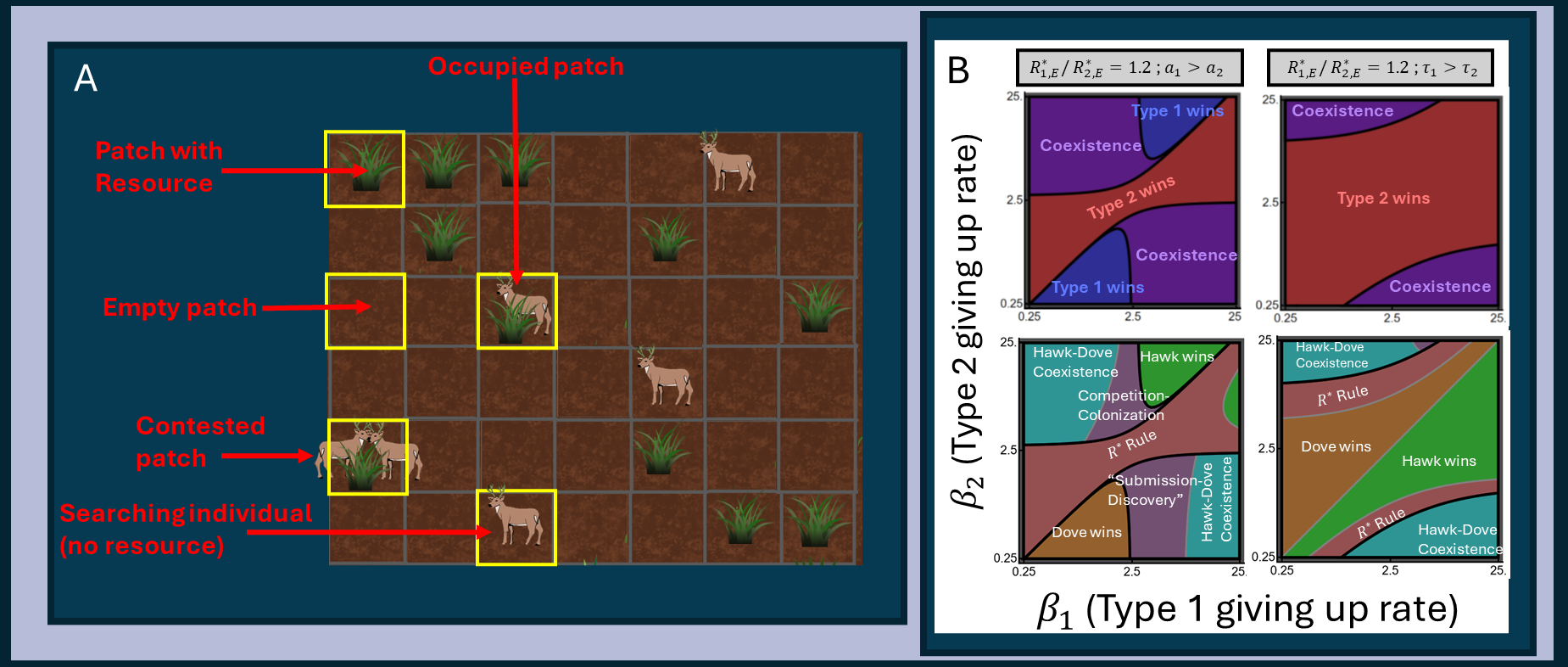🦅 How interfernece competition affects coexistence 🕊
In ecology, researchers often talk about two types of competition: exploitative competition and interference competition. Exploitative competition refers indirect competition between (or within) species for mutually shared resources. Interference competition refers to direct interactions between organisms (e.g., stealing resources in contests, territoriality, stabbing and toxin-antitoxin systems in microbes).
The majority of “mechanistic” models and theories in community ecology – such as R* theory and the R* rule – emphasize exploitative competition and ignore interference competition. In contrast, the Hawk-Dove game from evolutionary game theory is a classic model in which interference competition is emphasized. Similarly, the competition-colonization trade-off is a classic coexistence mechanism in theoretical community ecology which implicitly relies on interference competition, at least within certain interpretations. However, R* theory, the Hawk-Dove game, and the competition-colonization trade-off have not been integrated into a unified framework.
 (A) is a visualization of the model, depicting a single species that consumes resources and engages in contests over resources. (B) shows parameter space in which interference competition may permit coexistence of two consumer species competing for a single limiting resource (first row) and the predominant mechanism underlying the competitive outcome (second row). Link to article on BioRxiv
(A) is a visualization of the model, depicting a single species that consumes resources and engages in contests over resources. (B) shows parameter space in which interference competition may permit coexistence of two consumer species competing for a single limiting resource (first row) and the predominant mechanism underlying the competitive outcome (second row). Link to article on BioRxiv
In our recent paper currently under review, Dr. Joanna Masel and I expand a simple exploitative consumer-resource model to include interference competition over resources. As depicted in the figure below, we consider a model in which one individuals (e.g., the deer) may contest others over the use of resources. Through this model, we find that two consumer species can persist on a single limiting resource due to interference (in contrast to classical ecological theory such as the R* rule). We find that some of the parameter space resembles the R* rule, other parts resemble the Hawk-Dove game, and other parts the competition-colonization trade-off. We also find evidence of novel coexistence mechanism which we refer to as the “submission-discovery” trade-off.
In upcoming work, we will expand this model to include trait evolution. We aim to elucidate how interference competition modifies niche evolution and character displacement.